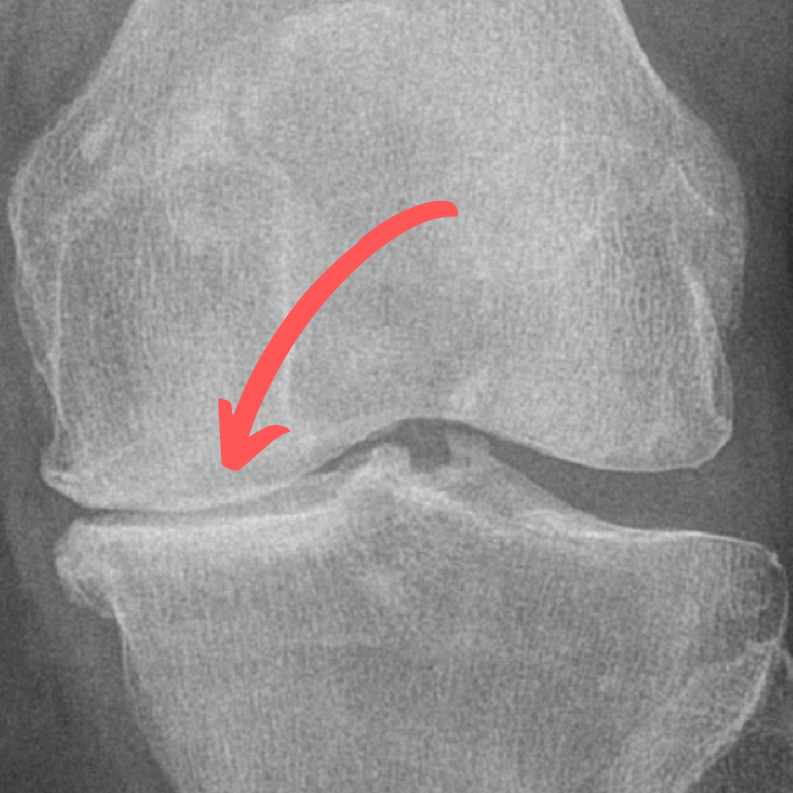Myth: Noisy Knees Are a Sign of Osteoarthritis
Do you worry about the orchestra of sounds originating from your knees when you move?
Do you feel, or have been told, that these crunching, cracking, popping, grinding and/or grating sounds can be a sign of arthritis?
Thankfully, this isn’t the case.
Interestingly, this isn’t to say you’re arthritis-free, just that Osteoarthritis is unlikely to be the cause of these symptoms.
Clinically, ‘noisy’ knees speak more to the way you load the knee than a less than perfect x-ray. And believe it or not, this is good news - because you can do something about it.
You don’t need to cure knee arthritis to silence the sound effects, you just need to improve the way the knee moves.
Let’s discuss why.
What is Osteoarthritis?
Osteoarthritis is considered the inflammation of a joint or joints following an extended period of poor loading or wear and tear.
Clinically it is one of the most common diagnoses associated with joint dysfunction - particularly in the knee with an aging population.
X-ray of knee arthritis in medial compartment (left)
Osteoarthritis is commonly associated with pain, swelling, joint stiffness and, as mentioned already - a potential cavalcade of off-putting sounds.
Interestingly, despite Osteoarthritis being an inflammatory-based dysfunction by definition, it’s more commonly thought of as just joint wear and tear. What’s even more interesting is that joint wear and tear on its own has the potential to be asymptomatic (and silent) under the right conditions.
Related: To better understand what creates knee dysfunction, read which three hidden areas can set your knee up to fail.
Why These Sounds Aren’t Osteoarthritis-Specific
Clinically it’s common to hear an arthritic knee coming before you see it. These symptoms can be worrisome, particularly when industry terms like ‘bone on bone’ are used.
But it might surprise you to learn these noises aren’t directly related to the state of your knee joint. Instead, they have more to do with the surrounding mechanics of the knee.
Mechanical Causes of Noisy Knees
The following are subtle local issues that promote noisy knees:
Tight lateral quadriceps at the knee
Tight lateral hamstrings at the knee
Tacked down soft tissue around the knee
Calf tightness at the knee
Interestingly, the following can perpetuate these symptoms:
Stiff ankles
Lack of hip rotation
Reduced gluteal strength
Poor core strength
Tight hip flexors
With this in mind, consider noisy knees the symptom of a knee joint with the handbrake on.
Again this isn’t to say your knees are arthritis-free, however, it does raise the really interesting question of how symptomatic they need to be - particularly if pain is also involved.
Clinically, providing more slack to the knee by removing these handbrakes often takes away the noises.
So the question remains, how do we remove these handbrakes and eventually silence any unwanted sound effects?
How to Reduce Those Sound-Effects
Thankfully, this is simple to do with a massage ball or foam roller.
Clinically the front/outer edges of the thigh as it blends into the knee is the most commonly restricted area. This is particularly true for the upper edge of the knee cap.
To address these handbrakes, take your mobility tool of choice and lie down. Gently press it into the above areas.
While doing so, there are four really nice ways to improve the mobility of these areas:
Passive pressure: Let the ball/roller passively sink in and give those tissues time to give
Rolling: Gently roll the ball/roller backward, forwards, side to side over restricted tissue
Active release: Shear the tissue free by bending and straightening your knee while the ball/roller presses into it.
Contract/relax: Let the ball/roller press in and then tense any musculature underneath for 10 seconds before relaxing and repeating.
A mixture of these techniques can really open up the knee and reduce those noises. Remember, we aren’t effecting any wear and tear in your knee apart from improving the way it’s loaded. If your knee looked arthritic on a scan the day before, it’ll most likely look the same regardless. But how your knee feels (and sounds) will change.
As a side note, perform a pre and post-exercise test to highlight the change. Prioritize a movement that reproduces your symptoms and take away any guesswork. You shouldn’t be disappointed.
Conclusion
Hopefully, you can appreciate why noisy knees are not Osteoarthritis-specific. As with many musculoskeletal complaints, your broader mechanics rule.
Address these subtle handbrakes and there is the very real potential to silence those unwanted sound effects - regardless of how your knee may look on an x-ray.
How are your knees going? Let us know in the comments below!
If you would like one of our highly skilled Physical Therapists to help your Arthritis and/or noisy knees, please don’t hesitate to book in for an appointment.
Alternatively, keep an eye out for our FREE knee pain workshop coming up in the next month or so.


